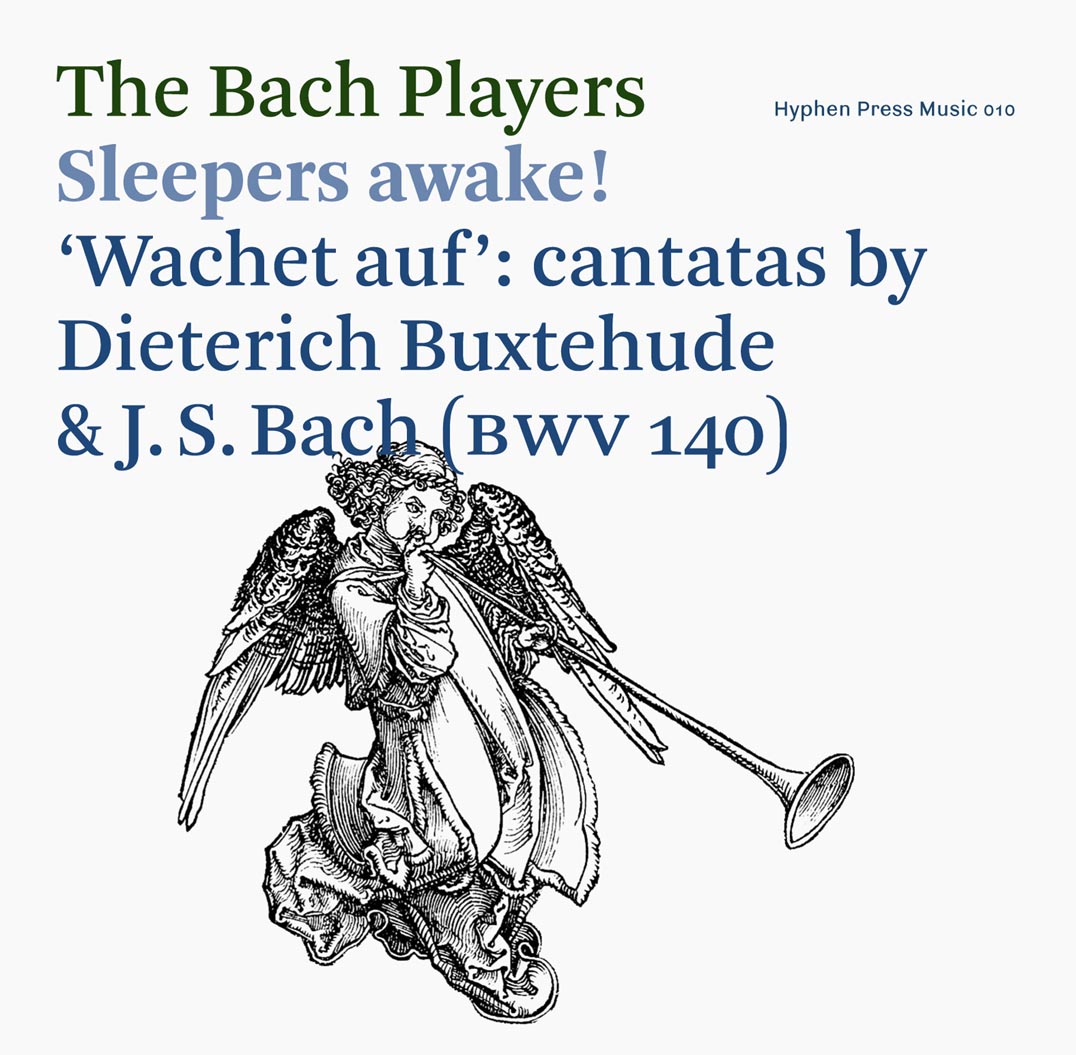Back to Reviews
‘Sleepers awake!’ reviewed in Early Music Review

David Stancliffe reviewed our CD ‘Sleepers awake!’ in Early Music Review, giving it 4.5 stars overall (out of 5 stars). He writes as follows:
As well as the iconic BWV 140, this CD has two cantatas by Buxtehude on the chorale Wachet auf (BuxWV 101 and 100), a Ciaconna aria for tenor, two violins and basso continuo (BuxWV 92) and a sonata for two violins, viola da gamba and basso continuo (BuxWV 266) and a remarkably free sonata for violino piccolo, viola da gamba and basso continuo by Phillip Heinrich Erlebach (1657–1714).
As always with Nicolette Moonen’s Bach Players, there is splendid playing, especially from the strings. The sonatas – new to me – are captivating in their fluid and lyrical forms, and the playing – the tone so pure as to be almost of a glass harmonica quality, especially of the violino piccolo – clearly a wonderful instrument (by John Barrett after Stainer from 1725 and lent by the Royal Academy of Music) with a whole page of the interesting, informative and well balanced booklet devoted to it – means that I cannot imagine a finer performance of the violino piccolo obligato in the duet BWV 140.ii Wenn kömmst du, mein Heil?
Moonen’s comment on lightening the bass line in that aria and the absence of a 16’ in the whole CD are fully justified by the variety and clarity, though by the time BWV140 was written (in 1731) Bach seems to have had a 16’ violone at his disposal.
But the singers do not fare so well. The bass, Jonathan Gunthorpe, has a rather stodgy voice – perfectly correct, but rather unyielding: nor does he sound like a passionate lover in Mein Freund ist mein. The tenor, Samuel Boden, is excellent – neat, perfectly in tune and flexible: I can hear every word. More problematic are the upper parts. Here I am too often aware of that kind of singerly vibrato that so many singers are encouraged to develop not being used as a means of ornamenting a particular note or phrase so much as a pretty universal part of the sound. Both soprano and alto can sing cleanly – in brisker passages both articulate well – but on longer notes that wobble creeps in. Do they think they sound uninteresting without? For instance, in the opening movement of Bach’s Wachet auf, the soprano’s long notes of the chorale are doubled by the (beautifully played) corno. The horn plays the notes straight but shapes the phrases intelligently. The voice seems less sure of where the phrases are going – is she sometimes short of breath? – and her intermittent vibrato means that voice and instrument are hardly ever perfectly together. When the playing style is so clean, the voices surely need to listen to and match the instruments? The OVPP quartets that impress me attend to this like a Knabenchor of those (largely) Lutheran Academies where SATB choirs of boys all between the ages of 9 and 18 make a perfectly blended sound.
As always with this group’s performances, the music is interestingly and intelligently presented in a minimalist cardboard packet: good notes and an environmentally friendly package. Hearing the two Buxtehude cantatas on Wachet auf as a prelude to BWV140 was highly instructive, and made me appreciate over again just how varied and sensitively employed Bach’s response to his texts is. In spite of my reservations about the singers, I can wholeheartedly recommend this disc.
Early Music Review (published 16 November 2016)
(One may contrast David Stancliffe’s views of the two female singers on the recording with the views of Lindsay Kemp in Gramophone, who finds them ‘boyish’.)